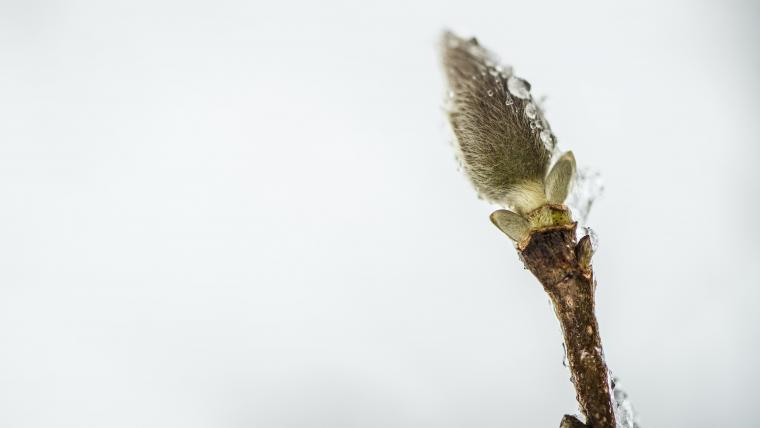
In a nutshell
In the spring, plants time their growth to coincide with increasing availability of light and soil resources. Leafing out too early puts plants at risk of late spring freezes that can damage vulnerable leaf buds, which can result in a delay in growth or even plant death. The number of early springs followed by late freeze events, called false springs, is predicted to increase due to climate change.
To determine the likelihood of damage from a late spring freeze in temperate forests, the authors evaluated several datasets that reflect the start of spring including the USA-NPN’s spring leaf index. Many factors play a role in the susceptibility of plants to damage from false springs, including the plant’s life stage, functional group such as overstory trees or understory shrubs, morphology, and phenological traits such as whether the plant puts on buds early.
What is special about this study?
The authors used multiple data sources to reflect spring onset, including the spring leaf index, long-term observational data collected at the Harvard Forest, and PhenoCam data, consisting of high resolution webcam images of forest canopy. Each dataset revealed different estimates of false spring damage, demonstrating the variation across functional groups captured by the different data sources. For example, the spring leaf index is based on observations of early-season shrubs, while the observational data and PhenoCam data consist of larger canopy species. This study underscores the importance of using the appropriate data and information to estimate false spring risk based on plant functional groups of interest.
What does this mean for YOU?
A clearer understanding of how to estimate the risk of false springs for various species/functional types improves estimates of the future frequency of false springs under different climate change scenarios. A better understanding of false spring risk can also help improve models of species range shifts, carbon budgets and even feedback loops between climate shifts and forest composition.
Citation: Chamberlain, C.J., B.I. Cook, I. Garcia de Cortazar-Atauri, and E.M. Wolkovich. 2019. Rethinking false spring risk. Global Change Biology. 2019: 1-12. doi.org/10.1111/gcb.14642.